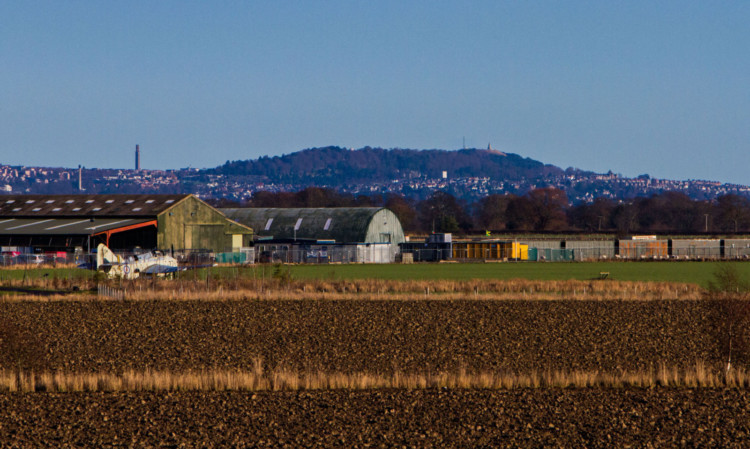The future of a controversial new village plan that would alter the Carse of Gowrie forever hangs in the balance.
Councillors have been asked whether to extend consent for the proposal, keeping the prospect of a 240-home “sustainable village” at Errol Airfield alive.
Outline planning consent for the concept was granted to Morris Leslie three years ago and is due to expire this month. Perth and Kinross Council’s development management committee will consider on Wednesday whether to extend permission in principle by a further three years.
The outcome is not a foregone conclusion; permission was granted by a majority vote of the full council last time, while pressure has come from a number of councillors on Dundee City Council who have voiced strong opposition to the plan.
The application site covers more than 43 hectares of Errol Airfield and comprises land adjacent to the runways.
“The site is perfectly flat, and is essentially a large area of undeveloped grassland/pasture, which is set within an industrial environment that is created by the surrounding industrial buildings associated with the commercial operations at the airfield,” states council development quality manager Nick Brian in his report to councillors.
“In 2010 the council granted a planning in principle consent for the erection of a sustainable village comprising a mixed-use development for 240 houses, industrial starter units, workshop/warehouses and associated offices, all contained within a structured landscape with significant belts of trees, earth mounding and water features.”
The approval was granted after significant modifications were made to the original plan, including reducing the number of houses from 410 to 260.
Mr Brian described the new village as “significant in terms of its scale and has the potential to have an impact on the local environment, particularly when it is in such close proximity to the River Tay, which is environmentally sensitive.”
The report notes that two letters of representation have been received, with the main issues of contention being drainage and flooding concerns, claims that the proposal is contrary to the development plan and the issue of safety at a local rail level crossing.
In detailing how he believes that the councillors should respond to the request to extend permission, Mr Brian states: “Whilst I still have reservations regarding the nature of the proposal, and its sustainability in this location, the relatively recent decision by the council to approve the original application is a significant material planning consideration, which is made even more significant by its compliance with the local development plan.
“As this development is intrinsically linked to both the housing and construction industries, both of which have been significantly affected by the recent (and ongoing) economic downturn, I consider the provision of an additional two years to be appropriate, to help bring the detailed elements of this site forward.
“Due to the significant nature of the proposal, it is likely that the development, if implemented, would have a significant and positive impact on the local economy, both during the construction phase and once completed.”
Mr Brian recommends a two-year extension rather than the three years requested.
